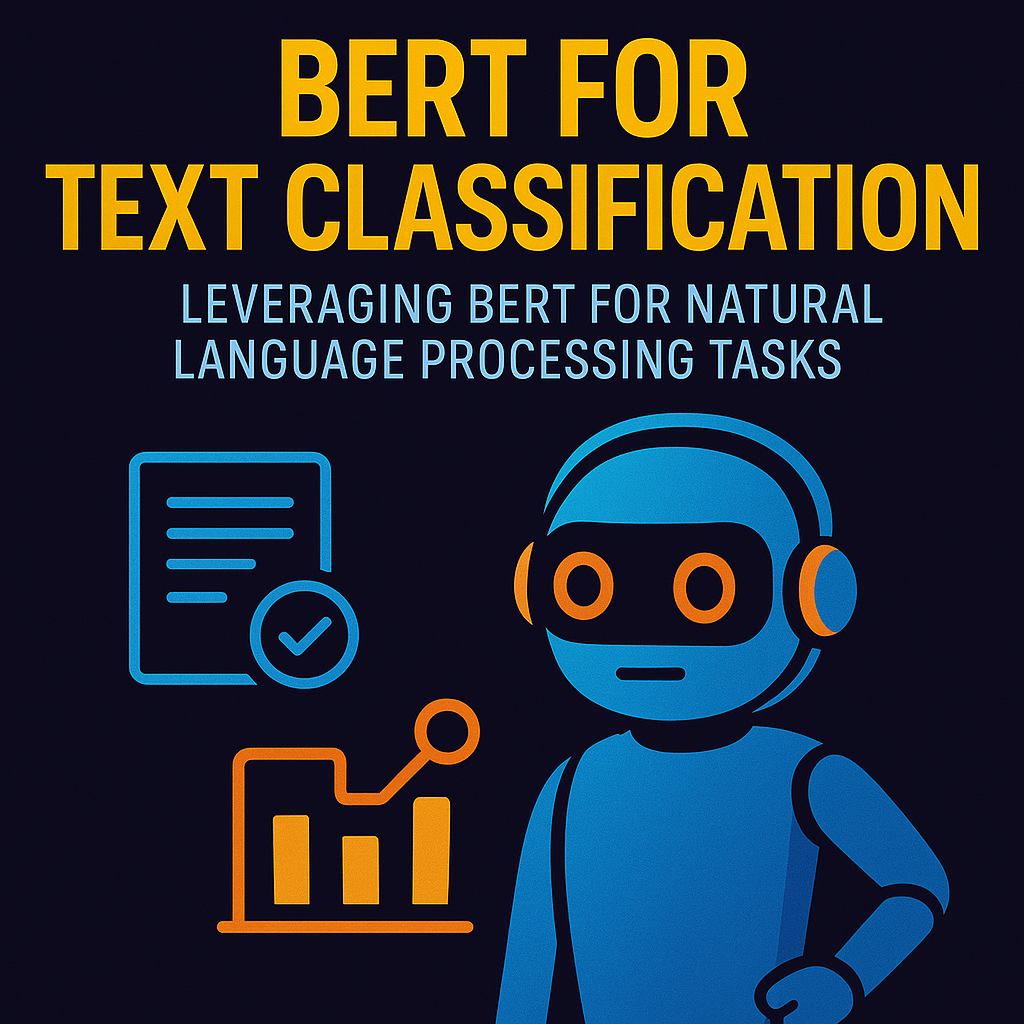Introduction
In the world of Natural Language Processing (NLP) , BERT (Bidirectional Encoder Representations from Transformers) has revolutionized how we approach text classification tasks. Unlike traditional models, BERT can capture the context of words in a sentence, enabling more accurate text classification. In this post, we'll dive into how BERT works and how you can leverage it for text classification tasks like sentiment analysis, spam detection, and topic categorization.
Understanding BERT's Architecture
BERT is based on the Transformer architecture, a model that uses attention mechanisms to process input data in parallel, unlike previous sequential models like LSTMs and GRUs. One of the key advantages of BERT is its bidirectional nature, meaning it can consider both the left and right context of a word in a sentence simultaneously.
In text classification, BERT is fine-tuned for specific tasks. It processes input text through multiple layers of attention, allowing it to understand complex language patterns.
The input to BERT is a sequence of tokens, and the output is a sequence of contextualized embeddings. For text classification, these embeddings are passed through a classification head to predict the label for the input text.
Mathematics Behind BERT
At the core of BERT's architecture is the transformer’s attention mechanism, which allows the model to focus on different parts of the sentence when making predictions. The attention mechanism is based on the following formula:
\\[ \text{Attention}(Q, K, V) = \text{softmax}\\left( \\frac{QK^T}{\\sqrt{d_k}} \\right) V \\]
Where:
- \\(Q\\) = Query vector (representation of the word)
- \\(K\\) = Key vector (representation of context)
- \\(V\\) = Value vector (information from the context)
- \\(d_k\\) = Dimension of the key vector
This mechanism allows BERT to weigh the importance of each word in the input sentence, enabling more accurate predictions in text classification tasks.
Practical Applications of BERT in Text Classification
BERT can be used for various text classification tasks. Below are some practical examples of how BERT is applied in real-world scenarios:
- Sentiment Analysis: BERT can classify text into different sentiment categories like positive, neutral, or negative. Learn more about sentiment analysis in marketing from our Sentiment Analysis in Marketing post.
- Spam Detection: BERT can classify emails or messages as spam or not based on the content.
- Topic Categorization: BERT can classify text documents into predefined categories based on their content, such as categorizing news articles into politics, sports, or technology.
Implementing BERT for Text Classification
Now, let's walk through a simple implementation of BERT for text classification using Python and the Hugging Face Transformers library. Here's an example of how to fine-tune a pre-trained BERT model on a text classification task:
# Install necessary packages
!pip install transformers datasets
# Import necessary libraries
from transformers import BertTokenizer, BertForSequenceClassification, Trainer, TrainingArguments
from datasets import load_dataset
# Load dataset
dataset = load_dataset("imdb")
# Load pre-trained BERT model and tokenizer
tokenizer = BertTokenizer.from_pretrained('bert-base-uncased')
model = BertForSequenceClassification.from_pretrained('bert-base-uncased')
# Tokenize the text
def tokenize_function(examples):
return tokenizer(examples['text'], padding="max_length", truncation=True)
tokenized_datasets = dataset.map(tokenize_function, batched=True)
# Set up training arguments
training_args = TrainingArguments(
output_dir='./results',
num_train_epochs=3,
per_device_train_batch_size=16,
per_device_eval_batch_size=64,
warmup_steps=500,
weight_decay=0.01,
logging_dir='./logs',
)
# Initialize trainer
trainer = Trainer(
model=model,
args=training_args,
train_dataset=tokenized_datasets['train'],
eval_dataset=tokenized_datasets['test'],
)
# Train the model
trainer.train()
This example demonstrates how to fine-tune BERT for sentiment analysis on the IMDb movie reviews dataset. By fine-tuning a pre-trained model on your own text classification task, you can achieve state-of-the-art performance on a variety of text classification problems.
Challenges in Using BERT for Text Classification
Despite its powerful capabilities, there are several challenges when using BERT for text classification:
- Computational Resources: Fine-tuning BERT requires significant computational power, especially with large datasets.
- Large Model Size: BERT’s model size can be quite large, leading to longer training times and more memory consumption.
- Fine-tuning Complexity: While BERT is highly effective, fine-tuning it requires careful parameter tuning and a good understanding of the task at hand.
However, with the availability of cloud computing and pre-trained models, these challenges are becoming easier to manage. For more information on optimizing BERT models for better performance, check out our Optimizing BERT for NLP Tasks guide.
Conclusion
BERT has revolutionized the field of text classification with its bidirectional approach to understanding the context of words in a sentence. By fine-tuning pre-trained BERT models, businesses and researchers can leverage this powerful model for various text classification tasks such as sentiment analysis, spam detection, and topic categorization.
While there are challenges in using BERT, its effectiveness in delivering high-quality results makes it an essential tool for modern NLP applications. If you want to learn more about implementing BERT for NLP tasks, check out our comprehensive guide on BERT for Text Classification.








